15 years one-stop China custom CNC machining parts factory
 608 |
Published by VMT at Jan 29 2025 | Reading Time:About 6 minutes
608 |
Published by VMT at Jan 29 2025 | Reading Time:About 6 minutes
When it comes to selecting the right materials for CNC machining, hardness is a critical property that cannot be overlooked. The hardness of a material directly affects its ability to withstand wear, resist deformation, and perform under stress. But how do you determine the hardness of a material, and why is it so important for your machining projects? Whether you are manufacturing a durable product or designing precision components, understanding material hardness is essential to ensuring optimal performance and longevity. In this comprehensive guide, we’ll explore the concept of material hardness, how to measure it, and why it matters in CNC machining.
Material hardness is a measure of a material's resistance to deformation, scratching, or indentation. It is a critical factor when choosing materials for CNC machining parts, as it influences the wear resistance, durability, and overall performance of the final product. To ensure you select the right material, it's important to understand how hardness is tested and what different hardness tests can tell you about your material’s performance.
Now that we’ve established the importance of material hardness, let’s dive deeper into what exactly material hardness is, the different types of hardness tests available, and how to evaluate the hardness of the materials you're working with in CNC machining. Understanding these concepts will help you make informed decisions about material selection and improve the overall efficiency of your manufacturing process.
Material hardness is a property that indicates a material's ability to resist deformation, penetration, scratching, or indentation. In simple terms, hardness determines how tough a material is when it comes into contact with other surfaces. Hardness is essential in many applications, especially for parts that will face heavy wear and tear, like CNC machining parts used in automotive, aerospace, or industrial machinery.
When you choose a material for CNC machining, hardness will influence factors such as durability, resistance to scratching, and its ability to maintain its shape under stress. The harder a material is, the more it will resist damage from external forces. On the other hand, a softer material is more prone to deformation and damage.
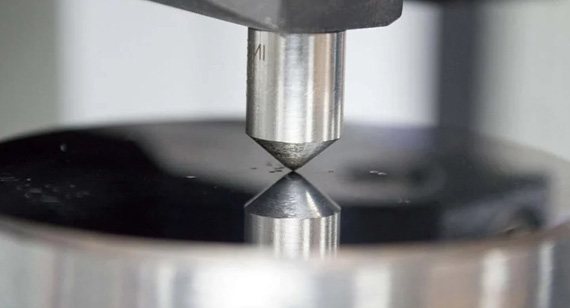
There are several ways to test material hardness, each suitable for different types of materials and specific applications. The choice of the test depends on the material being tested and the specific hardness information you need. Common hardness tests include:
Choosing the right hardness test is essential to ensure that you gather the necessary data to select the best material for your CNC machining projects. For custom CNC machining, using the appropriate hardness test helps achieve precision and ensures that the final product meets strength and durability requirements.
| Type |
Material |
Hardness HB Brinell Hardness kg/mm2 |
HRB Rockwell B MPa |
HRC Rockwell C MPa |
| Aluminium |
Aluminium 2024 T351 | 3.1355 AlCu4Mg1 |
120 |
[~65] |
- |
| Aluminium |
Aluminium 5083 H111 | 3.3547 | AlMg4.5Mn0.7 |
75 |
[~37] |
- |
| Aluminium |
Aluminium 6082 T651 | 3.2315 | AlSi1MgMn |
90 | [~52] |
- |
| Aluminium |
Aluminium 7075 T651 | 3.4365 | AlZn5.5MgCu |
150 | [~80] |
- |
| Aluminium |
Aluminium 7075 T7351 | 3.4365 | AlZn5.5MgCu |
140 | [~75] |
- |
| Brass |
Brass (bar) Cz121 | C360 | 2.0401 CuZn36Pb3 |
90 to 160 |
- | - |
| Brass |
Brass (billet) Cz112 | C464 | 2.0321 | CuZn36Sn1 |
80 to 135 |
- | - |
| Carbon Steel |
Carbon Steel | EN8 | 1.0503 | Fe As machined Heat Treated |
150 to 200 (as machined) 200 to 255 (hardened) |
[~80 to 93] [~93 to 100] |
[~1 to 16] [~16 to 27] |
| Copper |
Copper C101 |
<65 to 105 |
- | - |
| Mild Steel |
Mild Steel S275JR | 1.0044 | Fe |
[~135] |
75 |
- |
| Stainless Steel |
Stainless Steel 17-4PH | 1.4542 | X5CrNiCuNb16-4 As machined Heat treated |
<365 (solution annealed) 400 to 500 (heat treatment H900) |
[~100] [~114 to 117] |
[~40] [~43-47] |
| Stainless Steel |
Stainless Steel 304L | 1.4304 | X5CrNi18-10 |
[~150] |
82 |
[~15] |
| Stainless Steel |
Stainless Steel 316 L | 1.4404 | X2CrNiMo17-12-2 |
[~150] |
81 |
[~15] |
| Titanium |
Titanium Grade 5 | 3.7164 | Ti6Al4V |
[~320] |
109 |
[~36] |
When selecting materials for CNC machining, several factors must be considered beyond just hardness. The material should be compatible with the intended application, the environmental conditions it will face, and the production methods used. Some key considerations include:
The primary advantage of using hard materials in CNC machining is their ability to resist wear and tear. Hard materials can withstand abrasive environments, making them ideal for manufacturing parts that require a high degree of durability, such as gears, engine components, and cutting tools. In addition to wear resistance, hard materials:
While hard materials offer numerous advantages, they also come with their own set of challenges:
Understanding these limitations helps when making material selection decisions, especially when balancing cost, machinability, and performance.
If you're working with materials that are not naturally hard, there are several treatments and techniques that can increase their hardness. Common methods include:
Surface Treatments to Make Low-Hardness Metal Harder:
Heat treatments play a vital role in altering the hardness of metal materials used in CNC machining. Here are some common heat treatments:
Difference Between Hardness and Hardenability
Case hardening is a heat treatment process used to increase the surface hardness of low-carbon steel or other materials. It involves heating the material in a carbon-rich environment and then quenching it to create a hard outer layer while maintaining a softer, more ductile core. The primary purpose of case hardening is to enhance the material’s wear resistance, making it ideal for parts that experience high levels of friction or abrasion, such as gears, shafts, and other components.
By altering only the surface properties of the material, case hardening enables parts to withstand the stresses and wear associated with operational environments, while the softer inner core absorbs shock and reduces brittleness.
| Heat Treatment |
Purpose |
Compatible Materials |
| Case Hardening & Carburising |
To increase the surface hardness of the metal part, while keeping the core soft. |
Mild Steels (1018, A36) |
Case hardening is a versatile process, with several variations tailored to different types of materials and requirements. The primary methods include:
1. Carburizing
Carburizing is one of the most common case hardening methods. It involves heating the steel in a carbon-rich environment, typically at temperatures around 900-950°C. The process allows carbon to diffuse into the surface of the steel, forming a hardened outer layer. Carburizing is widely used in manufacturing high-strength parts, such as gears, cams, and crankshafts.
2. Nitriding
Nitriding is a case hardening process that uses nitrogen (often introduced through ammonia gas) to form nitrides on the surface of the material. This results in a hard, wear-resistant surface layer. Nitriding operates at lower temperatures (typically 500-550°C) compared to carburizing and is known for producing a hard surface with minimal distortion. This method is commonly used for high-strength steels, particularly in applications that require resistance to corrosion and wear.
3. Carbonitriding
Carbonitriding is similar to carburizing but involves introducing both carbon and nitrogen into the material's surface. This combination increases surface hardness and improves resistance to wear and fatigue. Carbonitriding is performed at lower temperatures than carburizing (around 800-850°C) and is often used for components that will be subjected to high stress, such as automotive parts like transmission gears and crankshafts.
4. Induction Hardening
Induction hardening is a localized case hardening process that uses electromagnetic induction to heat the surface of the steel rapidly. Once the desired temperature is reached, the material is immediately quenched (usually with water or oil). This creates a hardened outer layer while maintaining the material's core properties. Induction hardening is particularly effective for producing high-strength surfaces on parts like shafts, rollers, and other machine components that need surface hardness and wear resistance.
5. Flame Hardening
Flame hardening is similar to induction hardening but uses a high-temperature flame to heat the surface of the material instead of induction. The material is heated to a specific temperature with an oxy-acetylene torch, and then it is rapidly cooled in water or oil to produce a hardened layer. Flame hardening is typically used for large parts, such as rolls, gears, and rails.
Hardening is a heat treatment process that increases the hardness of a material, typically steel, by heating it to a high temperature and then rapidly cooling it (quenching). The purpose of hardening is to improve the material’s strength and wear resistance. It is commonly used to make tools, machine parts, and other components that require high durability and strength under stress.
The process of hardening changes the crystal structure of the material, transforming it into a more rigid form that resists deformation and abrasion. However, hardening can also make the material more brittle, which is why some hardening processes are followed by tempering, a heat treatment that reduces brittleness while retaining hardness.
| Heat Treatment |
Purpose |
Compatible Materials |
| Quenching |
To increase the hardness of the steel alloy. |
Mild steels (1045, A36) Alloy steels (4140, 4240) Tool steels (D2, A2, O1) |
Precipitation hardening, also known as age hardening, is a process used to increase the hardness and strength of a material, typically an alloy, by heating it to a high temperature and then cooling it in a controlled manner. The process involves the formation of tiny particles (precipitates) within the material's structure, which hinder the movement of dislocations and increase the material's strength.
Precipitation hardening is commonly used for aluminum, copper, and nickel-based alloys. It is particularly beneficial for producing high-strength components that need to maintain good corrosion resistance and other mechanical properties, such as aerospace and automotive parts.
| Heat Treatment |
Purpose |
Compatible Materials |
| Precipitation Hardening (Aging) |
To increase the hardness & strength of the metal alloy. |
Aluminium alloys 6061 T6, 6068 T6, 7075 T6, Stainless Steel (17-4) |
Here is an example of how precipitation hardening would affect Aluminium 7075
| Aluminium 7075-0 (tempered) |
Aluminium 7075-T6 (precipitation hardened) |
|
| Ultimate Tensile Strength |
280 MPa |
510-540 MPa |
| _Yield Strength_ |
140 MPa |
430-480 MPa |
| _Elongation at Break_ |
9-10% |
5-11% |
| Hardness (HV) |
68 |
175 |
Anodizing is an electrochemical process that converts the surface of a metal, typically aluminum, into an oxide layer that is thicker and more durable than the natural oxide layer. This layer provides increased corrosion resistance, wear resistance, and aesthetic appeal through a variety of color options. Anodized materials also have better adhesion for paints and adhesives.
Hard anodizing, also known as hardcoat anodizing, is a more intense version of anodizing used to create a thicker and harder oxide layer. This process is typically used on aluminum components that need extra durability, such as in aerospace, military, and industrial applications. Hard anodizing produces a surface with significantly enhanced wear resistance and corrosion protection, making it ideal for high-performance parts.
While hardness and hardenability are related concepts, they are not the same. Understanding the distinction between these two properties is important when selecting materials for various applications.
1. Definition
2. Essence
3. Measurement
4. Method
Material hardness can be categorized into three main types. These categories help engineers and manufacturers assess the suitability of materials for different applications based on their performance in specific conditions:
1. Scratch Hardness
Scratch hardness refers to the ability of a material to resist scratching or gouging by a harder material. This is typically tested by trying to scratch the material with another material of known hardness, like in the Mohs hardness test for minerals.
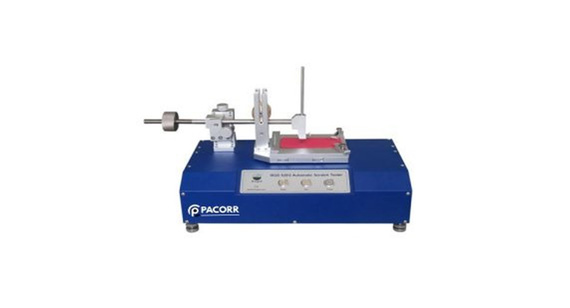
2. Rebound Hardness
Rebound hardness measures the resilience of a material to deformation when a small, hard object (such as a ball) is dropped onto it. The rebound height indicates the material’s ability to resist indentation. The Leeb hardness test is commonly used to measure rebound hardness, particularly in larger, industrial components.
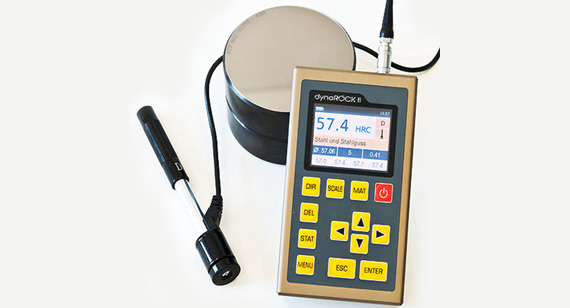
3. Indentation Hardness
Indentation hardness is the most commonly used method to assess the hardness of metals and alloys. It measures how much a material deforms when a harder object (indenter) is pressed into it. The depth or size of the indentation is used to calculate the material's hardness, with common tests being Brinell, Vickers, and Rockwell hardness tests.
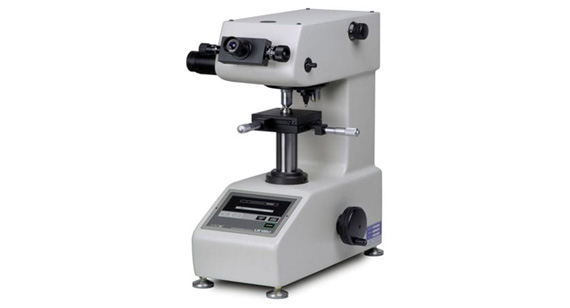
Understanding the various methods of hardening, along with material hardness, is crucial for selecting the right materials for CNC machining and manufacturing processes. Case hardening processes, such as carburizing, nitriding, and carbonitriding, are key to producing components that are wear-resistant and durable while still maintaining toughness and strength in their core. Knowing the difference between hardness and hardenability can also help you choose materials with the right properties to ensure the longevity and performance of your parts.
Material hardness is an essential property that describes a material's ability to resist deformation, scratching, or indentation. Different types of hardness are used to assess the performance of materials under various conditions. These types can help engineers and manufacturers choose the most appropriate materials for specific applications. Material hardness is typically classified into three main categories:
1. Scratch Hardness
Scratch hardness refers to the resistance of a material to being scratched or gouged by a harder material. This type of hardness is especially useful when determining how easily a material will wear down or be damaged when subjected to abrasion. The Mohs scale of hardness is commonly used to classify materials based on their ability to scratch other materials.
Scratch hardness is most often used for softer materials like minerals, plastics, and coatings. For example, diamonds are the hardest known material on the Mohs scale, meaning they can scratch nearly every other material. In contrast, softer materials like talc rank low on the scale.
The Mohs hardness test works by attempting to scratch the material with a series of reference materials of known hardness. The hardest material that can scratch the sample determines its scratch hardness.
2. Rebound Hardness
Rebound hardness measures a material's ability to resist deformation by evaluating how much a specific object "bounces back" after being dropped onto the material’s surface. This is usually measured by an instrument known as a Leeb hardness tester.
Rebound hardness is useful for materials that undergo dynamic or impact stress, like metals and alloys used in industrial applications. The result is expressed as the height of the rebound, which is inversely proportional to the hardness of the material: the harder the material, the higher the rebound.
This test is quick and efficient, making it suitable for testing large components or materials in place without damaging them. For instance, when testing castings, forgings, or welded components, rebound hardness is ideal for assessing the material’s overall performance under stress.
3. Indentation Hardness
Indentation hardness measures a material’s resistance to permanent deformation when a specific indenter (a hard object) is pressed into it under a set amount of force. This is the most widely used method for hardness testing, especially for metals and alloys, and is the basis of commonly used hardness scales such as Brinell, Vickers, and Rockwell.
The hardness value is determined by the size, depth, or volume of the indentation made by the indenter. The smaller or shallower the indentation, the harder the material. This method is highly effective for measuring the hardness of materials like steel, aluminum, and copper.
To quantify the hardness of materials, various units are used depending on the test method. The most commonly used hardness scales are:

1. Brinell Hardness (HB)
The Brinell hardness test measures the material’s hardness by pressing a hard steel or carbide ball of a specific diameter into the surface of the material under a fixed load. The diameter of the indentation left on the material is then measured and used to calculate the Brinell hardness value (HB). Brinell hardness is particularly suitable for testing materials that have coarse or heterogeneous structures.
Commonly used for:
2. Vickers Hardness (HV)
The Vickers hardness test uses a diamond pyramid indenter to apply a known force to the material. The hardness value is determined by measuring the diagonal of the indentation left by the indenter. Vickers hardness is widely used for its versatility and the fact that it can be applied to a broad range of materials, including very thin coatings and small, precise parts.
Commonly used for:
3. Rockwell Hardness (HRA, HRB, HRC, etc.)
The Rockwell hardness test is one of the most commonly used methods for measuring material hardness. It involves pressing an indenter into the material’s surface under a specific load and measuring the depth of the indentation. The Rockwell hardness scale is divided into different scales, such as HRA, HRB, HRC, and others, depending on the material being tested and the type of indenter used. For instance, HRC is used for measuring the hardness of steel, while HRB is more appropriate for softer materials like aluminum and brass.
Commonly used for:
4. Leeb Hardness (HLD, HLS, HLE, etc.)
Leeb hardness testing is a rebound hardness method, as discussed earlier. It uses a specific hardness tester that measures the velocity of a rebound after an impact. The unit of measurement is Leeb hardness (HLD, HLS, HLE), depending on the specific type of Leeb test and the material being tested. This method is particularly beneficial for testing large, heavy, or complex components in place, such as those found in machinery, turbines, or large castings.
Commonly used for:
Conclusion
Understanding the different types of material hardness—scratch hardness, rebound hardness, and indentation hardness—is crucial for selecting the right materials for various applications. Whether you need a highly durable metal for aerospace components or a wear-resistant coating for industrial machinery, knowing the hardness type and measurement unit will help ensure that the material meets the required specifications. The most commonly used units for measuring hardness include Brinell, Vickers, Rockwell, and Leeb hardness, each suited to different materials and testing needs. By selecting the appropriate hardness test and units, manufacturers can optimize the design and functionality of their products while maintaining the necessary durability and wear resistance.
How to Test the Hardness of a Material?
Testing the hardness of a material is a critical process in determining its suitability for different applications. Hardness testing measures a material's resistance to permanent deformation, scratching, or indentation. There are several established methods for testing material hardness, each suited for different materials and requirements. Below, we will explore the most common hardness tests, including the Brinell, Rockwell, Vickers, Mohs, and Durometer tests.
1. Brinell Hardness Test
The Brinell hardness test is one of the oldest and most widely used methods for testing hardness, particularly for materials with coarse or uneven grain structures. In this test, a hard steel or carbide ball is pressed into the material's surface under a specified load. The size of the indentation left behind is measured and used to calculate the Brinell Hardness Number (BHN).
Brinell Hardness Formula:
After performing the Brinell test, the following formula is used to calculate the hardness value:

Where:
F = force applied to the indenter (N)
D = diameter of the indenter (mm)
d = diameter of the indentation left on the material (mm)
This formula helps determine the material's resistance to deformation and wear.
Applications:
2. Rockwell Hardness Test
The Rockwell hardness test is perhaps the most commonly used hardness test for metals and alloys. It involves pressing an indenter into the material under a pre-set load and then measuring the depth of the indentation. The Rockwell test uses a variety of scales, including Rockwell A (HRA), Rockwell B (HRB), and Rockwell C (HRC), depending on the material and the type of indenter used.
Rockwell Hardness Formula:
The Rockwell hardness value is calculated using the following formula:

Where:
HR = Rockwell hardness value (depends on the scale)
N = proportionality factor (depends on the scale used)
s = proportionality factor (depends on the scale used)
d = depth of the permanent indentation (mm)
The Rockwell test is convenient because it directly gives the hardness value without the need for additional calculations, making it faster and easier than other methods.
Applications:
3. Vickers Hardness Test
The Vickers hardness test uses a diamond pyramid indenter, which is pressed into the surface of the material under a known force. The hardness value is determined by measuring the diagonal length of the indentation. The Vickers test is versatile and is suitable for materials ranging from very soft to very hard.
Vickers Hardness Formula:
To calculate the Vickers hardness value, the following formula is used:

Where:
HV = Vickers hardness value
F = force applied to the indenter (N)
d = diagonal length of the indentation (mm)
This method provides precise results and is ideal for testing small parts, coatings, and thin materials, making it suitable for high-precision applications.
Applications:
4. Mohs Hardness Test
The Mohs hardness test is a qualitative scale used to measure the scratch resistance of various minerals. It is a relative hardness scale where each material is compared to others to determine its scratch resistance. The test involves scratching the material with a reference set of minerals, each with known hardness values, and seeing which one scratches the material.
The scale ranges from 1 (talc), the softest mineral, to 10 (diamond), the hardest material. For instance, if a material can scratch a substance rated 5 on the Mohs scale but is scratched by a substance rated 6, its hardness is between 5 and 6.
Applications:
5. Durometer Test
The Durometer hardness test measures the hardness of soft materials such as rubber, plastics, and elastomers. The test uses a spring-loaded indenter that presses into the material, and the hardness is determined based on the depth of indentation. Durometer hardness is usually measured on different scales, such as Shore A for soft materials and Shore D for harder materials.
Durometer Hardness Formula:
While Durometer tests provide a direct hardness value, they do not typically involve complex formulas. The test is based on the indentation depth and is read from a gauge.
Applications:
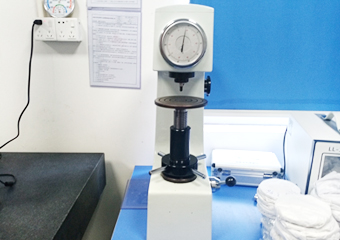
Conclusion
Testing the hardness of materials is a crucial step in selecting the right material for any project. Whether you need to evaluate a metal's wear resistance, determine a plastic's strength, or test the scratch resistance of a gemstone, hardness testing provides essential insights into material performance. The Brinell, Rockwell, Vickers, Mohs, and Durometer tests are some of the most widely used methods, each suitable for different applications and material types. Selecting the correct hardness test and method will ensure that your materials meet the required specifications for durability, wear resistance, and overall performance.
Understanding how to test the hardness of a material and choosing the right method is essential for professionals in manufacturing, engineering, and material science, ensuring that products are reliable, durable, and effective for their intended uses.
Material hardness plays a pivotal role in ensuring that materials are suited to their intended applications. Whether you're designing products, selecting materials for manufacturing, or ensuring the longevity of components, understanding hardness is essential for optimizing performance, enhancing durability, and preventing failure. Hardness directly influences how materials behave under stress, their ability to resist wear and tear, and how they perform in specific environmental conditions. In this article, we’ll explore the importance of material hardness, its impact on design, and how it contributes to the overall efficiency and longevity of products.
Design Considerations
When designing products or components, hardness is one of the key properties to consider. Hard materials are often required for high-performance applications, where strength and durability are crucial. For example, if you're designing a mechanical part that will experience constant friction or abrasion, choosing a material with high hardness is essential to reduce wear and extend the lifespan of the part. Conversely, for parts that need to absorb shock or deformation, materials with lower hardness may be more suitable to prevent premature failure.
The appropriate hardness level ensures that components meet the functional requirements without being over-engineered, which could lead to unnecessary cost increases. Designers and engineers must carefully balance hardness with other properties like toughness, flexibility, and strength, depending on the application's specific needs.
Wear Resistance
Wear resistance is one of the most significant reasons why material hardness is important. Harder materials tend to resist abrasion and wear better than softer materials, making them ideal for moving parts, machinery, and tools that experience constant friction. For example, in CNC machining, where tools are frequently in contact with hard metals or abrasives, materials like carbide, high-speed steel, or hardened steel are used because of their superior wear resistance.
Materials with high hardness are also preferred in automotive, aerospace, and manufacturing industries, where equipment is subjected to harsh conditions and frequent use. For instance, gears, bearings, and cutting tools require materials with high hardness to ensure efficient and long-lasting operation.
Durability
Durability is directly linked to the hardness of a material. Hard materials generally last longer because they are less prone to wear, deformation, or damage. This is particularly important in applications that demand long-term performance, such as machinery, automotive components, and industrial tools.
When materials are too soft, they may wear out quickly, leading to the failure of components, increased maintenance costs, and reduced efficiency. On the other hand, materials with high hardness can endure harsh operating conditions and maintain their integrity over extended periods, minimizing downtime and repair costs.
Predicting Performance
Knowing the hardness of a material allows engineers and designers to predict its performance in real-world conditions. Materials with high hardness are typically better at withstanding high stress and pressure, which is essential in applications like structural components, aerospace parts, and cutting tools. Conversely, materials with lower hardness may be more prone to plastic deformation, fatigue, or failure under stress.
In CNC machining and precision manufacturing, predicting performance helps ensure that parts will meet operational expectations. By selecting materials with appropriate hardness, engineers can optimize the functionality and reliability of the end product, minimizing risk and uncertainty.
Improving Efficiency
Material hardness can significantly impact the efficiency of both production processes and end-use performance. During manufacturing, harder materials often require more specialized machinery, higher precision, and longer processing times, which could lead to increased production costs. However, once the materials are in use, their enhanced hardness can reduce wear, leading to longer intervals between maintenance and fewer replacements, thereby improving the overall efficiency of a system.
For example, hardening treatments like case hardening or quenching are used to improve the hardness of materials in areas that require higher wear resistance, without compromising the strength and toughness of the material. This results in products that can withstand higher levels of stress, operate more efficiently, and last longer, improving productivity and reducing long-term operating costs.
Material Hardness Table
Here is a quick reference for common hardness scales used to evaluate materials:
| Hardness Test |
Scale |
Common Materials |
Hardness Range |
| Brinell |
HB |
Castings, Forgings |
100-700 HB |
| Rockwell |
HRA, HRB, HRC |
Steel, Aluminum, Brass |
50-70 HRC (for steels) |
| Vickers |
HV |
Ceramics, Thin Films |
100-2000 HV |
| Mohs |
1-10 (scale) |
Minerals and Gems |
1 (talc) to 10 (diamond) |
| Durometer |
Shore A, D |
Rubber, Plastics |
20-90 Shore A/D |
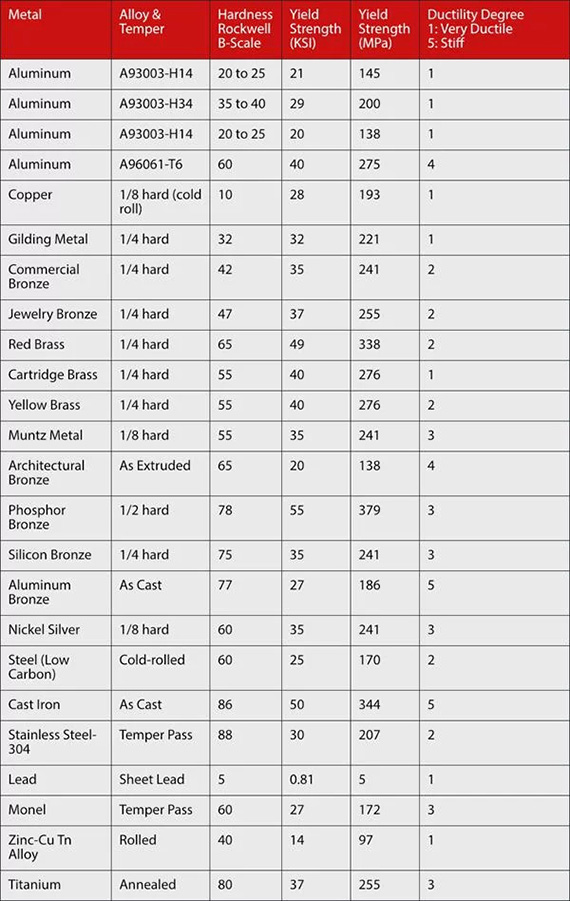
Each test and scale measures hardness differently, and it’s important to choose the right one for the specific application and material type. The hardness of materials can significantly affect the choice of manufacturing processes, product lifetime, and operational costs.
Material hardness is a critical factor in determining how well a material will perform in various applications. It plays a vital role in design considerations, wear resistance, durability, predicting performance, and improving efficiency. Selecting the right material hardness ensures that parts perform reliably, last longer, and reduce the frequency of maintenance or replacement.
At VMT, we specialize in providing custom CNC machining solutions with high-quality materials optimized for durability and performance. Our CNC machining services ensure that your components meet the required hardness specifications, whether for aerospace, automotive, or precision engineering applications. By choosing the right materials and applying appropriate hardness testing methods, we help our clients achieve optimal results for their products.
At VMT, we understand the importance of material hardness and offer a range of CNC machining services to meet your needs. Whether you require CNC prototype machining for testing, custom CNC machining for unique designs, or high-precision CNC machining parts for production, our experts are here to help. With our state-of-the-art CNC machines and experienced technicians, we can produce parts with the right hardness to ensure optimal performance.
Reach out today to discover how our CNC machining factory can assist you in creating high-quality, durable parts for your projects.

How do I calculate material hardness?
Hardness is typically calculated using established formulas depending on the hardness test, such as Brinell, Rockwell, or Vickers.
What is the Hardness and Strength of a Material?
Hardness and strength are two fundamental material properties that are often confused but serve different purposes in material science and engineering.
The key difference between the two is that hardness measures resistance to surface wear while strength measures resistance to structural failure under stress. Both are important but serve different roles in selecting materials for specific applications.
How to Measure the Hardness of a Material?
Measuring the hardness of a material involves testing it against a standard, often using a defined force and an indenter. The process and the method vary depending on the type of hardness being measured (e.g., Brinell, Rockwell, or Vickers).
These methods give specific numerical values that correspond to the material's resistance to deformation, indicating its overall hardness.
What is the Hardness Grade of a Material?
The hardness grade of a material is a numerical value that indicates the material's resistance to deformation. This value can vary depending on the test method used. For example:
Hardness grades are essential for selecting materials that will perform well under specific conditions, such as in industrial tools, cutting edges, or structural components.
What Instrument is Used to Measure Hardness?
The instrument used to measure material hardness depends on the testing method. Some common instruments include:
Each instrument is designed to provide a numerical value corresponding to the material’s hardness, which helps engineers and manufacturers assess the material's suitability for various applications.
What is the Metric Unit of Hardness?
There is no single "metric unit" for hardness because hardness is measured on different scales, each with its own units of measurement. For example:
While these values are typically dimensionless, they correspond to the material's resistance to indentation or deformation under specific testing conditions.
What is the Unit of Hardness?
The unit of hardness depends on the hardness scale and the method used to measure it. Some examples of hardness units include:
These values are used to express the material's resistance to surface deformation and are helpful in selecting materials based on wear resistance and durability.
What is the General Measure of Hardness?
The general measure of hardness refers to a material's ability to resist deformation, scratching, or indentation. The hardness value provides an indication of the material’s ability to withstand wear, friction, and pressure. It is an essential property for materials that undergo frequent use, such as cutting tools, gears, bearings, and other components exposed to high-stress conditions.
What is the Unit of Hardness of Steel?
For steel, the most common units used to measure hardness are:
These units help determine the steel’s resistance to deformation and are critical for selecting appropriate steel grades for manufacturing, machining, and tool-making.
What is the Unit of Rockwell Hardness?
The unit of Rockwell hardness is represented by a scale letter (such as HRA, HRB, or HRC) followed by a numerical value. The C scale (HRC) is most commonly used for harder materials like steel, while the B scale (HRB) is used for softer materials like aluminum. The Rockwell hardness scale measures the depth of indentation under a specific load, and the units are not dimensioned but are instead a function of the indentation depth.
What is the Symbol for Hardness?
There is no single symbol for hardness itself, but various scales and units are used to represent it:
These symbols indicate the testing method used to measure the material's hardness.
What is the Formula for Measuring Hardness?
Each hardness test has its own formula for determining the hardness value:
1. Brinell Hardness Formula:

Where:
F = Force applied (in Newtons)
D = Diameter of the indenter (in mm)
d = Diameter of the indentation (in mm)
2. Rockwell Hardness Formula:

Where:
N = Proportionality factor
d = Depth of indentation
s = Proportionality factor depending on the scale used
3. Vickers Hardness Formula:

Where:
F = Force applied (in Newtons)
d = Diagonal length of the indentation (in mm)
Each method requires a different calculation based on the test and the material being tested.
How to Measure Total Hardness?
To measure total hardness, it often involves combining different types of hardness values, especially for water hardness (total hardness in liquids). However, in materials science, the total hardness typically refers to measuring the overall hardness using multiple hardness scales (e.g., Brinell, Vickers, Rockwell), each applicable to different materials and conditions.
Which Method Can Measure Hardness?
Several methods can measure hardness depending on the material and testing conditions:
Each method is selected based on the material’s characteristics and the type of hardness being measured.
What is the difference between hardness and strength?
Hardness refers to a material’s resistance to indentation or scratching, while strength refers to its ability to withstand force or stress without breaking.
What is the importance of hardness in CNC machining?
Hardness affects the wear resistance and longevity of tools, cutting edges, and the material itself, which can impact the efficiency and costs of manufacturing.
How can I improve the hardness of a metal?
Techniques like case hardening, quenching, carburizing, and heat treatments can increase the hardness of metals.
What is the best hardness scale for steel?
The Rockwell C scale (HRC) is typically used for testing steel, especially for hardened steel.
By understanding how to measure and interpret material hardness, engineers can make more informed decisions about material selection, ensuring products perform optimally and last longer.
